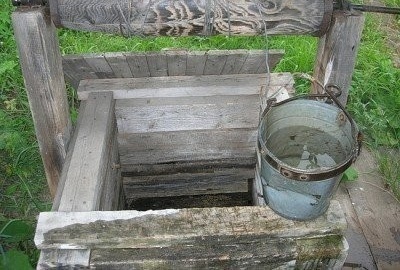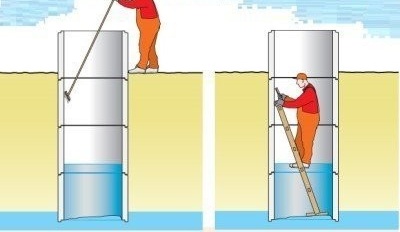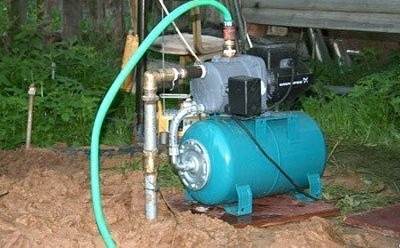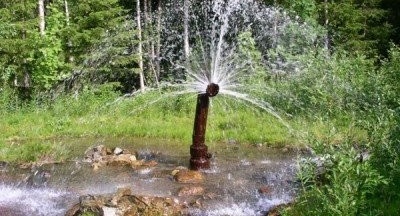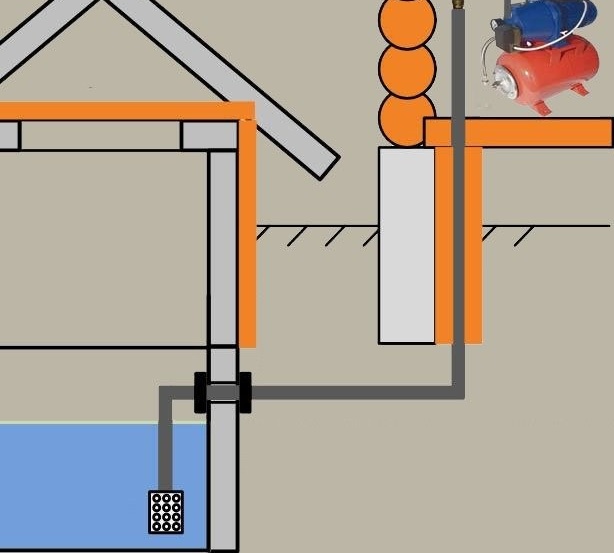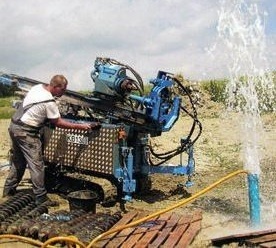Which is better - a well or a well? Overview of 4 sources of water supply and their features
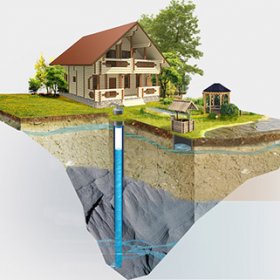
Regular water supply is one of the conditions for a person's comfortable living. Centralized communications are usually present in apartment buildings, but private housing construction has to be equipped independently. Of the existing water supply options for suburban areas, the most frequent choice is between two sources: a well and a well. These two options have fundamental differences. And the question is not only in price. There is a dilemma: well or well, which is better for private water supply?
Content
Where does water come from for water supply?
Before thinking about the source of water supply, it does not hurt to find out what kind of water this source will supply us. Aquifers can be divided into three types:
- High end. The layer closest to the surface of the earth. The maximum depth is 4 meters. Its fullness depends on precipitation and has its maximum value during the spring snowmelt. The minimum level or complete absence of water happens in the autumn-winter period. Such water is suitable only for irrigation. During the construction of a well or well, this layer must be insulated to prevent it from entering drinking water.
- Groundwater. Located below the tip, it is an unchanged aquifer. So, the water level in the well will be the same as in the rock. Saturation of the groundwater aquifer occurs due to filtering through the soil of sediment, river water and other aquifers. The depth of this aquifer reaches ten, and sometimes 40 meters.
- Artesian waters. They are located between the layers and are under pressure. During drilling of an artesian well, water rises above the aquifer, in some cases it can gush. Artesian waters protect against impenetrable formations from pollution. Therefore, it is most suitable for use. However, in order to “extract” such water, it is necessary to deepen more than 40 meters.
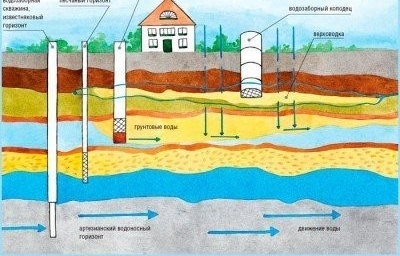
Which is better: a well or a well depends on the depth of the aquifer, but the lower the aquifer, the cleaner the water
The depth of each aquifer in different territories is different!
What design can be built?
For individual water supply, several options are possible:
- well;
- Abyssinian well;
- filter well;
- artesian well.
Well - a cheap option for arranging water supply
The well is the simplest design for water supply.The depth of such a structure varies from 5 to 15 meters, which depends on the depth of the aquifer. Well construction is considered the cheapest option for arranging water supply. However, the water quality in it depends on climatic conditions and proper construction.
Advantages:
- relative low cost of construction;
- water supply is uninterrupted;
- availability and ease of operation;
- There is no problem retrieving an accidentally hit object;
- subject to timely cleaning and proper operation, it can last up to 50 years.
Disadvantages:
- the possibility of contamination with a hatch;
- small amount of water supplied;
- foreign objects getting into the water, which can lead to its infection by bacteria and microbes;
- the need for constant water withdrawal to avoid siltation;
- regular cleaning and disinfection is required.
Abyssinian well or needle hole
In fact, this is a well from 4 to 12 meters deep. The same water is obtained from such a structure as from a normal well. The difference is in the construction method, in which a pipe with a sharp end is manually driven into the ground to the required depth.
The water from the Abyssinian well is cleaner due to the fact that the construction does not have access to foreign objects and a water heater. However, the device of such a structure is not possible everywhere. In addition, you have to buy a self-priming pump.
Advantages:
- construction does not take much time;
- it is possible to equip a well in a basement or other room;
- the tightness of the structure prevents foreign objects from entering the water;
- with rare exceptions, water from the Abyssinian well can be consumed without purification;
- quite high performance;
- in favorable conditions, the service life of up to 30 years;
- it is possible to restore the well after failure due to clogging of the filter.
Disadvantages:
- due to the geological features of the area, the construction of the Abyssinian well is possible not everywhere, but only on soft and loose soils;
- the water layer must be at least 8 meters, since the self-priming pump used to extract water is not able to lift it from a greater depth;
- the inability to connect several water points without reducing the pressure;
- the need for continuous use of the well due to the threat of siltation.
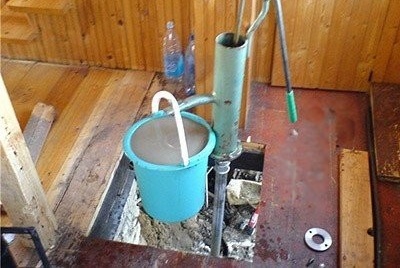
An Abyssinian well equipped in a basement or other room does not need to be insulated for the winter
Filter well (on sand)
Its depth does not exceed 30 meters. Drilling such a well will cost less than an artesian, but it will also last a maximum of 15 years. This is provided that the work will be done by professionals.
Advantages:
- drilling is done in one day;
- small-sized equipment is used to equip the well;
- the iron content in water is minimal.
Disadvantages:
- possible winter loss of water loss;
- the development of several similar wells in the neighborhood can lead to a decrease in the aquifer;
- regular use is necessary to prevent siltation.
Artesian well - expensive but reliable
Its depth is more than 30 meters. Drilling an artesian well is expensive. In addition, the pressure under which the water is located is not always enough, so using a pump will entail additional waste.
Nevertheless, the quality of water and the durability of such a structure are an indisputable advantage. To reduce costs, you can drill a well into several houses.
Advantages:
- high productivity due to the high yield of limestone;
- uninterrupted water supply regardless of the season;
- the ability to connect multiple water points without reducing the pressure, which allows the use of one well for several hosts;
- surface water pollution is excluded;
- regularity of use is not important;
- the life of an artesian well is about half a century.
Disadvantages:
- the high cost of construction;
- high mineralization of water is possible, especially saturation with iron;
- the need for permits for drilling a well.
The use of groundwater without permission is fraught with penalties.
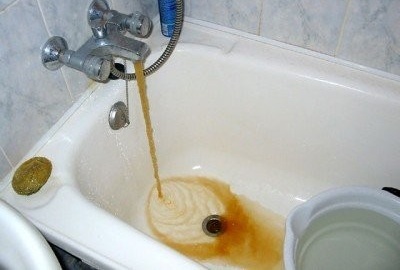
The content of a large amount of iron in artesian water negatively affects the instruments, so it must be cleaned
Making a choice focusing on the required volume of water
Well saturation depends on season and climate. On average, the maximum that can be extracted per hour from such a structure is 200 liters. If this amount is enough for you, then you can get by with a well. To ensure an uninterrupted supply of water in sufficient quantities will have to drill a well. However, keep in mind that a well on sand must be constantly used, otherwise siltation and failure of the structure will occur.
Financial aspects of construction
Some owners are primarily interested in the question of the price of such structures. Definitely building a well will be cheaper. Further use may be more expensive. The quality of the water supplied by the well is often unsatisfactory. Therefore, in addition, you have to buy a cleaning system. Plus annual bottom cleansing and disinfection.
Sometimes a deep bed of groundwater makes the construction of a well more expensive, and the quick-moving quicksand makes it impossible. You can reduce the cost of drilling a well by agreeing with neighbors to share. In addition, the life of the well is longer than the well. Therefore, the price of the issue is resolved in each case separately.
Thinking about what is best for water supply, a well or a well often focuses on the price of building construction. But do not forget that human health depends on the quality of the fluid used. The most suitable water can be given by an artesian well. It will also help to arrange uninterrupted water supply in private housing construction. Choosing what is more important to you.
